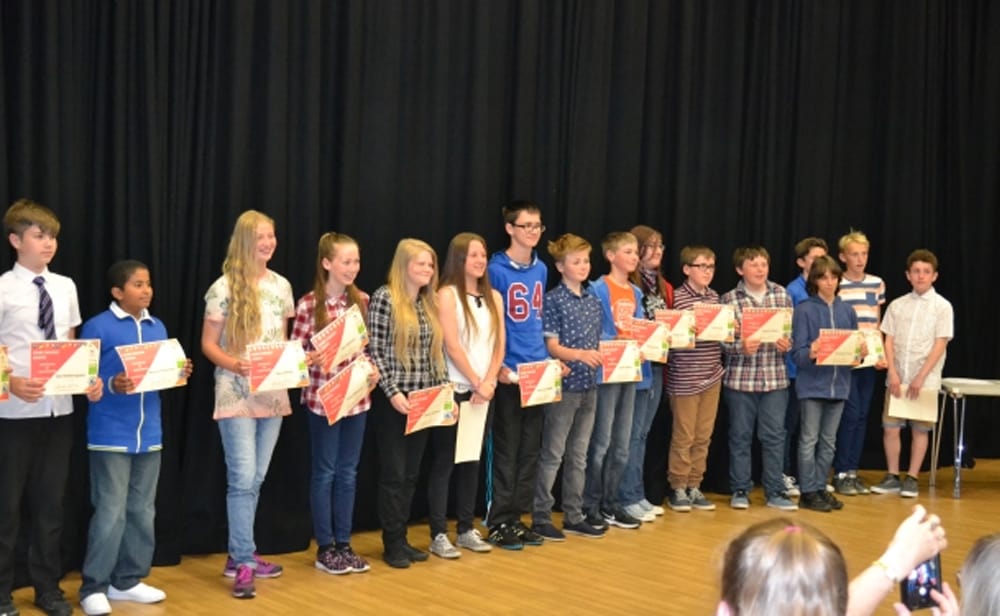2016 was the biggest year for game designers as nearly 70 students from Benjamin Britten Academy of Music and Mathematics, Long Stratton High School, East Point Academy and Pakefield High School took part in the annual Lowestoft Young Game Designer competition. Students ranging from Year 7 to year 11 took part to either design a game on paper or create one from code. The winners received a £30 amazon voucher, a certificate of awesomeness and a lovely Lowestoft Sixth Form College trophy. Invited guests from University Campus Suffolk (University of Suffolk), The Forum in Norwich, Four Circle Interactive Games and the Norwich Game Festival browsed the entries and offered their tips to the students. A notable fact is that just over 50% of the entrants were female and UCS were quick to praise the work L6FC and the high schools have done to promote this competition to girls. Next year looks to be even bigger with Ormiston Denes Academy, Sir John Leman High School and East Norfolk Sixth Form College set to join in with a new inter college challenge for staff and students. The Forum Norwich have offered us a chance to showcase next year’s entries at the Norwich Game Festival in May.
The overall best games were…
Best Game Concept
Holly Knowles: Escape the Titanic (Long Stratton High School)
Many game designers struggle to find the heart of a game.They continue adding more and more mechanics in the hope that the game will become more fun. They will dress the mechanics in a skin stitched from first-level consciousness ideas. Not Holly. Holly’s understanding of some of the most difficult design concepts is staggering. She has all but described and recreated Mihaly Csikszentmihalyi’s ‘Flow Channel’. Her diegesis is intricately researched and also inherently woven into the core progression and anticipation mechanics that drive the player ever onwards towards a clear goal, the icy water licking vicariously at their heels. Immersion is generated from a wealth of primary and secondary sensory predicates, from engaging interactions, and from the repetition of progression mechanics as the Player Character flees from the lower decks up to the boat deck. Empathy is encouraged through customisation – but not simply the routine customisation of hair and eye colour: Holly invites the player to choose their gender and social status, and dresses the Player Character accordingly and authentically. Finally, with the player cocooned in the agony of suspense, Holly throws locked doors at the player to hamper their progress and turn the screw. And she has mapped all of this onto the Wii nunchuk. This is outstanding design work. Whether it is informed or intuitive, or a combination of the two, is irrelevant given that Holly has so many years ahead of her to master and control these techniques.
Best Game Coding
Samuel Townsend: Dragon Killer (Benjamin Britten Academy of Music and Mathematics)
In his game Dragon Killer, Samuel has explored an intricate system of menus and mechanics and has wrestled with a veritable library of code. Whilst he had tamed the mechanics, he has rather lost control over the player’s experience and should remember to metaphorically take the player by the hand and lead them through the experience. Behind the interface, Samuel has employed a variable reward structure and grafted this effortlessly onto a game of quick reactions and mastery, ushering the player towards some of the more difficult-to-elicit emotional responses such as fiero (the fist pump) and excitement. With clear goals presented, Samuel generates anticipation and the player is herded inexorably towards the high score, locking the player in a ‘learn, practice, master loop,’ assembling the foundations of an addictive gaming experience.
Judges’ comments – there were 4 ‘one to watch’ awards for great potential:
Amy Graham and Neve Winney: Spiritless (Benjamin Britten Academy of Music and Mathematics)
Amy and Neve have presented a frighteningly mature narrative which nods towards the visual style of indie sensation Limbo. Their world is constructed from the raw building blocks of awe and wonder – two extremely difficult emotions to elicit – and the fight-or-flight mechanics grab the player by the scruff of the neck and force them into making life-and-death decisions at every turn. Although the mystery and puzzle components have not been explicitly designed, they would both be highly appropriate additions to a thoroughly interactive experience wrought from treachery, compassion and pathos.
Millie Bell and Abi Dye: Bird Song (Long Stratton High School)
Such a beautiful world: a world of music and patterned birds and magical environments! Pablo Picasso said ‘It took me four years to paint like Raphael, but a lifetime to paint like a child.’ As we get older, we find it harder to strip away the layers of our ideas in order to find the emotive heart. Millie and Abi have chosen only the most wondrous mechanics and aesthetic components for their game. As they develop their control over the player’s experience, they should be sure not to lose this unfiltered connection to joy and optimism. A great many players would love to spend time in Millie and Abi’s game worlds. We know that we would!
Holly Knowles: Escape the Titanic (Long Stratton High School) (see above)
Luca Walpole: Sneaky Spectre (Pakefield High School)
Luca has presented an intriguing narrative wrought from lost souls and patrolling guards, set inside a museum. Whilst the player’s, and the Player Character’s, goals and motivations remain ambiguous, Luca’s desire to recreate the stealth and exploration mechanics is clear, and much of the narrative ambiguity is converted to curiosity. The game has been well designed and well coded, although some of the proposed design work has yet to be translated into the game. Upgrades are required in order to progress through the game; as such, the limited in-game resources must be spent wisely. Coupled with the navigation and stealth mechanics, the judges believe there is a compelling gaming experience buried in Luca’s work, waiting to leap out at the player.

